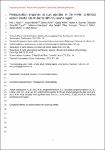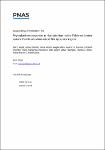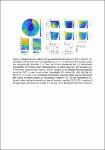Phytoplankton responses to dust addition in the FeMn co-limited eastern Pacific sub-Antarctic differ by source region
| dc.contributor.author | Wyatt, N | |
| dc.contributor.author | Birchill, A | |
| dc.contributor.author | Ussher, Simon | |
| dc.contributor.author | Milne, Angela | |
| dc.contributor.author | Bouman, H | |
| dc.contributor.author | Troein, E | |
| dc.contributor.author | Pabortsava, K | |
| dc.contributor.author | Wright, A | |
| dc.contributor.author | Flanagan, O | |
| dc.contributor.author | Bibby, T | |
| dc.contributor.author | Martin, A | |
| dc.contributor.author | Moore, CM | |
| dc.date.accessioned | 2023-06-14T13:38:26Z | |
| dc.date.available | 2023-06-14T13:38:26Z | |
| dc.date.issued | 2023-07-03 | |
| dc.identifier.issn | 1091-6490 | |
| dc.identifier.issn | 1091-6490 | |
| dc.identifier.other | ARTN e2220111120 | |
| dc.identifier.uri | https://pearl.plymouth.ac.uk/handle/10026.1/20969 | |
| dc.description.abstract |
The seasonal availability of light and micronutrients strongly regulates productivity in the Southern Ocean, restricting biological utilization of macronutrients and CO2 drawdown. Mineral dust flux is a key conduit for micronutrients to the Southern Ocean and a critical mediator of multimillennial-scale atmospheric CO2 oscillations. While the role of dust-borne iron (Fe) in Southern Ocean biogeochemistry has been examined in detail, manganese (Mn) availability is also emerging as a potential driver of past, present, and future Southern Ocean biogeochemistry. Here, we present results from fifteen bioassay experiments along a north–south transect in the undersampled eastern Pacific sub-Antarctic zone. In addition to widespread Fe limitation of phytoplankton photochemical efficiency, we found further responses following the addition of Mn at our southerly stations, supporting the importance of Fe–Mn co-limitation in the Southern Ocean. Moreover, addition of different Patagonian dusts resulted in enhanced photochemical efficiency with differential responses linked to source region dust characteristics in terms of relative Fe/Mn solubility. Changes in the relative magnitude of dust deposition, combined with source region mineralogy, could hence determine whether Fe or Mn limitation control Southern Ocean productivity under future as well as past climate states. | |
| dc.format.extent | e2220111120- | |
| dc.format.medium | Print-Electronic | |
| dc.language | en | |
| dc.publisher | National Academy of Sciences | |
| dc.subject | biogeochemistry | |
| dc.subject | phytoplankton | |
| dc.subject | ecophysiology | |
| dc.title | Phytoplankton responses to dust addition in the FeMn co-limited eastern Pacific sub-Antarctic differ by source region | |
| dc.type | journal-article | |
| dc.type | Journal Article | |
| plymouth.author-url | https://www.webofscience.com/api/gateway?GWVersion=2&SrcApp=PARTNER_APP&SrcAuth=LinksAMR&KeyUT=WOS:001041361900001&DestLinkType=FullRecord&DestApp=ALL_WOS&UsrCustomerID=11bb513d99f797142bcfeffcc58ea008 | |
| plymouth.issue | 28 | |
| plymouth.volume | 120 | |
| plymouth.publication-status | Published | |
| plymouth.journal | Proceedings of the National Academy of Sciences | |
| dc.identifier.doi | 10.1073/pnas.2220111120 | |
| plymouth.organisational-group | |Plymouth | |
| plymouth.organisational-group | |Plymouth|Research Groups | |
| plymouth.organisational-group | |Plymouth|Faculty of Science and Engineering | |
| plymouth.organisational-group | |Plymouth|Faculty of Science and Engineering|School of Geography, Earth and Environmental Sciences | |
| plymouth.organisational-group | |Plymouth|REF 2021 Researchers by UoA | |
| plymouth.organisational-group | |Plymouth|Users by role | |
| plymouth.organisational-group | |Plymouth|Users by role|Academics | |
| plymouth.organisational-group | |Plymouth|Research Groups|BEACh | |
| plymouth.organisational-group | |Plymouth|REF 2021 Researchers by UoA|UoA07 Earth Systems and Environmental Sciences | |
| dc.publisher.place | United States | |
| dcterms.dateAccepted | 2023-05-31 | |
| dc.date.updated | 2023-06-14T13:38:25Z | |
| dc.rights.embargodate | 2023-7-20 | |
| dc.identifier.eissn | 1091-6490 | |
| dc.rights.embargoperiod | forever | |
| rioxxterms.versionofrecord | 10.1073/pnas.2220111120 |




